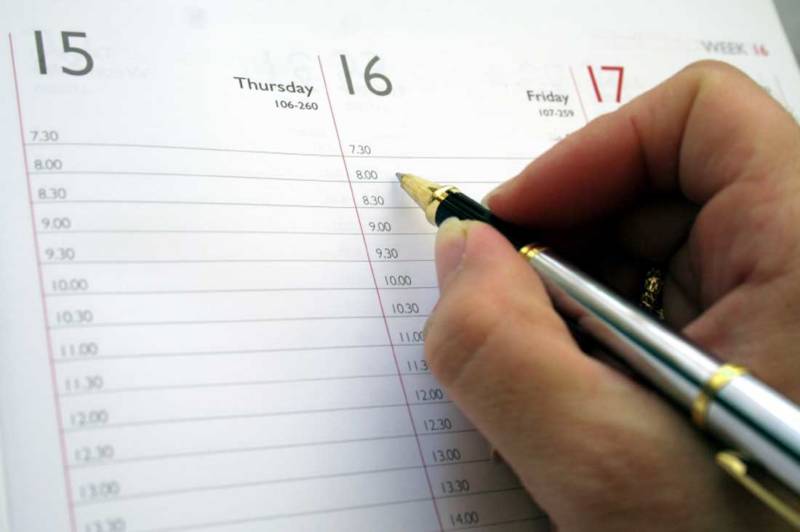
You must teach your students that achieving goals requires successful planning. Knowing your goals and priorities is important, but knowing the steps between setting your goal and reaching it is absolutely essential. Experts have developed many tools for goal achievement. This section outlines several planning tools for successful goal achievement. Here are the four tools to teach your students:
- Gantt Charts
- Calendars
- Lists
Gantt Charts
A Gantt chart is a tool for developing a timeline. Creating a Gantt chart is fairly easy.
- First, create a goal statement.
- Next, list all the steps it will take to achieve your goal.
- Then, plot each step going down the left-hand side of the chart in the order they must be accomplished to reach your goal.
- Finally, estimate the time required for each step and plot this time segment across the horizontal part of the Gantt chart. Overlap these time segments only when they can or should be accomplished at the same time.
Completing a Gantt chart will give you a much more realistic picture of how to spend and prioritize your time in order to reach a long-term goal. And a Gantt chart will give you a detailed blueprint to follow to reach your goal efficiently.

Calendar
Another popular method for planning is the calendar method. You can use any calendar for planning and creating a timeline. There are online calendars, paper calendars, cell phone apps for calendar scheduling, and Personal Digital Assistants or PDA’s. Just be sure the calendar you use is easily portable so you can always keep it with you and can update it as needed.
Here is an example. Say you are planning a meeting to occur on the last day of the month. You have the whole month to plan for the meeting. Your specific goal statement is: “Plan a board meeting involving 10 people for June 30th.”As with any timeline method, the first thing to do is to write out the steps you need to do in order to successfully plan this meeting. The steps for this goal might be as follows:
- Reserve a room
- Order food
- Send out invitations
- Have all invited guests respond to your invitations (RSVP)
- Inform security of date, time, and names of guests
- Create an agenda
- Invite guest speaker
So now, you would plot the steps on the calendar in the order they need to be done. You can also put items that need a certain amount of days to complete or that need to be done on a certain day. The calendar method lets you plan out each day and see the big picture of what needs to be done when.

Lists
Another planning tool that you can use is a list. A list can help you remember and organize what you need to get done. A To Do list contains the tasks you need to complete in order to achieve your goals. It reminds you of what you need to accomplish. You can have a master list of everything that needs to be done to accomplish your goal. Then, you can create a daily list to plan what you will do each day, including planning specific time for tasks related to your goal.
A daily list of tasks that need to be done is an essential part of action planning. Keep your list with you so you can refer to and update it regularly. Update your list by crossing off completed tasks and adding new tasks that need to be done. Urgent or important tasks can be highlighted or marked with an asterisk.
Thanks for tuning into our post on tools for setting and achieving goals. If you want to learn more about developing or teaching soft skills, sign up for a free soft skills webinar here.
